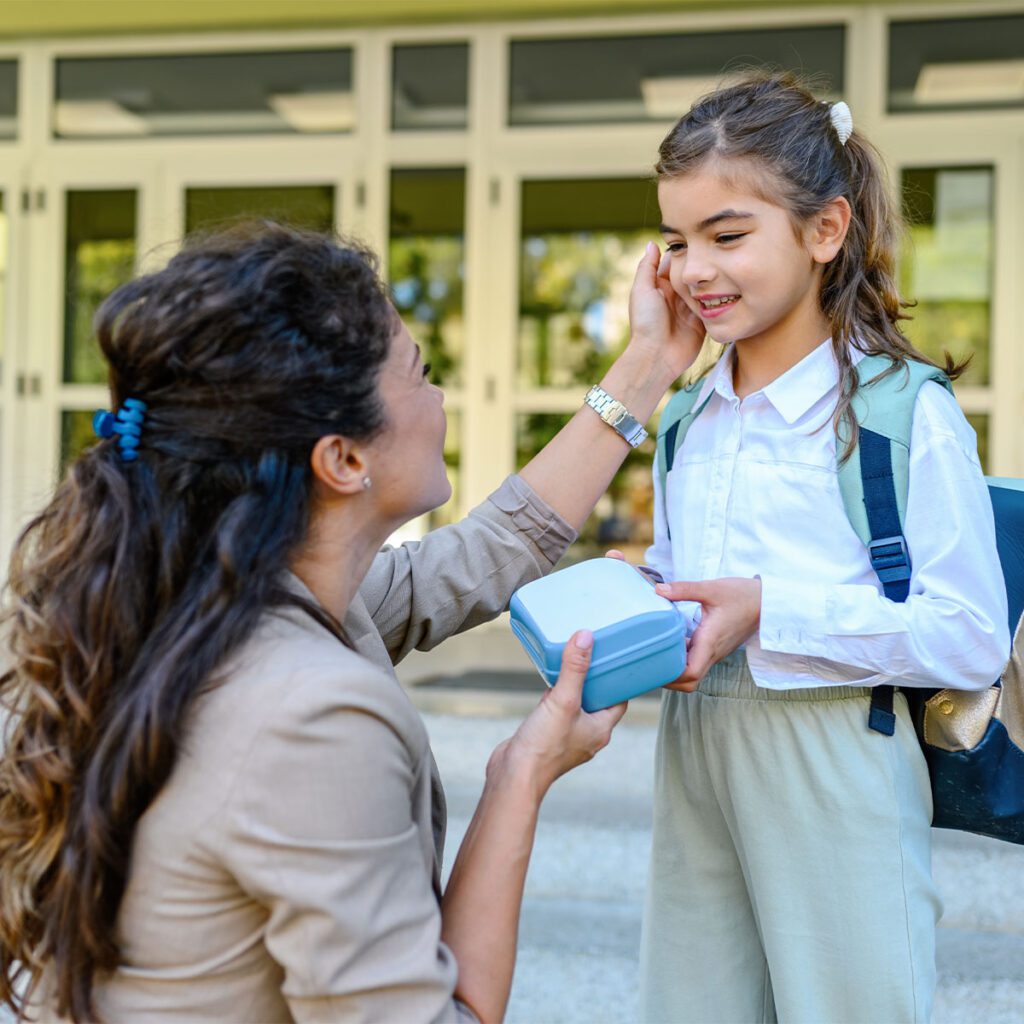Food Kids Will Eat
The school uniforms and new outfits have been prepared; the pencils and papers, crayons and new shoes are organized. A special lunch box or one of those familiar brown bags sits on the kitchen counter ready to pack. The real question (or dilemma) is what to put in the lunch that your child will actually eat and not trade for gum, baseball cards, or candy.
There are many variables to consider in the midst of preparing the school lunch you are expecting your child to consume. First, there is the lunch schedule. Children may be eating at 10:45 a.m. when they have been eating lunch in the afternoon all summer long. Not being hungry, they end up throwing away half the food. Worse yet, they save it for later, and it stays in the bottom of a locker for weeks. Secondly, there is very little time to eat in the average designated lunch period. The cafeteria may be very loud and crowded, and by the time your child is seated, he or she may actually only have 10 to 15 minutes in which to eat.
Then, there is the social pressure. Children do compare what is in their own lunches to what their lunch partners have in theirs.


If you proudly pack the healthiest lunch in the entire school while the other parents have packed chips and candy, the chances are your child will not be eating what you selected.
So what is a parent or caregiver to do? Your child may appreciate lunch foods prepared lovingly with your own hands, especially if you can get them to help in the process. Together, select a week’s worth of lunch menus and grocery shop together. Attempt to make the foods interesting and fun. They will be less likely to throw out their lunch if they had fun making it and will respect the time and effort it took to prepare the meal. Also, casually ask them what foods their friends are bringing to the lunch table. Find out if most the kids carry a paper sack or have a cool lunch box. Rummage around for a laminated gift bag that could be used for a week or so and change it out to keep things interesting. Insulated lunch bags that keep foods at the proper temperature offer another great option.
Parents are often shocked to find out that their children throw away half of their lunch. Try gently asking them how much of their lunch they actually eat. Conduct a lunch box review a few times a week to determine if they liked what packed for them. Let them know there is no punishment or hurt feelings if they did not like certain items. Use this as a tool to find out what they will eat. Sometimes children are overwhelmed or embarrassed if there is too much food. If they tell you they are still hungry after lunch, find out if the serving size needs to increase.
Help your child understand how important the meal is to fueling the rest of their afternoon. This is a good time to begin teaching some basic nutrition guidelines and label reading. You and your child could look at www.spottheblock.com for fun ways to learn about healthy eating. Consider packing your own lunch with the same types of food you are sending with your children. The best example parents can make concerning nutrition is to practice the good eating habits they want their children to follow. Some parents mistakenly believe young people can handle processed high sugar and high fat content foods without any side effects. If a food is not good quality for you, it is not good enough for your children either. Studies indicate general brain function, learning ability, and behavior are negatively affected by highly processed low nutrient content diets. The sooner in life children learn the importance of good nutrition practice and are involved in that process, the sooner they will begin a life-long commitment to their own health.

